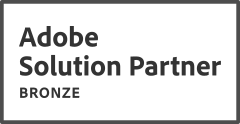Are you overlooking the Hidden Segment?
Successful companies that depend on a strong workforce are pivoting their marketing firepower towards a completely different audience: potential new hires.
by Taylor Bastien – 10 min read

We often focus our marketing energy on unearthing potential leads or reinforcing our relationship with paying customers. After all, everyone understands the marketing-to-sales pipeline. However, successful companies are pivoting their marketing firepower towards a completely different audience: potential new hires. Focusing on recruitment is especially important for firms whose product or service depends on fielding a strong workforce.
If you are in that situation, if your ability to compete depends on staffing then you ought to carefully consider your efforts to feed leads into your recruitment pipeline. Are you getting full value out of your marketing horsepower in the talent acquisition space? The answer matters, whether you're a B2C company with a heavy investment in "brick and mortar" customer service or you compete in a B2B market thanks to R&D and a highly skilled workforce.
What You Value Gets Your Attention
Over recent years, we've all seen the headlines about "The Great Resignation":
- 10 Million Jobs Went Unfilled in April, Adding to Inflation Pressures — The Street
- 40% of Workers are Looking to Resign in the Next Year — Microsoft
- Quitting Your Job Never Looked So Fun! — New York Times Oct. 29, 2021
In fact, the narrative that this is a new challenge is somewhat misleading. Non-farm resignations have been steadily rising for over 10 years (St. Louis Fed) and started as we exited the 2008 financial crisis. This means that though it may sting to lose key people, a lot of employers (including your competitors) are sharing in your pain. When employee turnover is high, there's little doubt that when push comes to shove, having a strong recruitment pipeline can be a critical competitive advantage.

The future of your enterprise may depend on the quality of people you bring into the fold. When it comes to recruitment, HR naturally gets all the attention. However, your Marketing team may well be the key difference-maker in your success or failure to attract and retain solid candidates.
According to Bloomberg:
Almost half of the world’s workers are considering quitting, according to a Microsoft Corp. survey. About 4 in 10 millennial and Gen Z respondents say they’d leave their job if asked to come back to the office full time, a global survey by advisory company Qualtrics International Inc. found—more than any other generation.
What you value gets your attention. If you value your workforce, if your business success depends on bringing talent onboard then you must invest in marketing to potential job seekers. You really don't have much choice.
If you can sell a product, you can sell a job
Like any other market, the employment market is driven by supply and demand. In many fields right now but especially in high-tech, engineering and hard science research, the overall demand for talent is higher than the supply. That harsh reality is driving up costs (i.e. salaries, benefits, the cost of the HR "sale") and increasing the competitive pressure on anyone who has to play in that marketplace for workers.
It's up to you to find, attract and convince qualified candidates to choose you over your rivals.
If this sounds familiar to capturing customer leads and moving them along a "customer journey" to conversion, don't be surprised. In fact, we propose that if individual customers are worth targeting, tracking and guiding towards a sale, you should apply the same type of focus on identifying and funneling candidates into the selection and hiring process. The good thing is that if you're used to playing in the ecommerce space, there are a lot of similarities to be found in marketing to candidates.
Finding good candidates is an evergreen problem that's made even more challenging when the job market is particularly tumultuous, as it is right now. Turnover is expected. People will retire. People will quit. Companies will grow. However, in recent years, the turnover rate at many companies has been unusually high, causing many well-paying, stable jobs to remain open.
Our team has helped clients market to potential new employees, in particular in the high tech space. Though not a comprehensive write-up, what follows are some of our general thoughts and best practices on marketing for HR, "The Hidden Segment". Because you've surely overcome your own unique learning curve in this area, we sincerly welcome your feedback and would love to hear any ideas you have to share.
How have you been able to address this unique and rewarding marketing challenge? What hasn't worked so well?
It's Still Just Marketing
There are many similarities between selling in ecommerce and in capturing new hire candidacies online. If you describe the basic features of each, you'll find they overlap quite a bit.
Marketing |
VS | Recruitment |
|---|---|---|
| Existing Customers | Existing and past employees or contractors | |
| — These people already have a good idea of what you can do for them. — Satisfy their needs and support their use and enjoyment of your services. — Encourage word-of-mouth marketing. |
— These people know you well. — If they are good at their jobs, you want them to stick around. — You also want them to bring in strong friends (make employees into champions). — Ensure fair compensation, a healthy work-life balance and meaningful work to accomplish. |
|
| Potential Leads | Potential Candidates | |
| — These folks may not know much about you. Aim to make a good impression, establish an identity and a voice. — Project a sense of quality and ability. — Drive paying customers steadily toward the sale. |
— These folks may not know much about you. Aim to make a good first impression, establish an identity and voice. — Project a sense of trustworthiness to steadily drive curious job-seekers toward submitting their candidacy. — Drive attractive candidates to apply. Separate the wheat from the chaff. |
|
Use your UX Smarts
Over the years, I've seen some... sub-optimal candidate experiences. Perhaps you have also. It can be a painful experience that gives people a very poor first impression of an organization. Likewise, it's amazing how leaning into the familiar experiential language of a shopping flow can grease the skids for people to comfortably submit a job application.
Believe it or not, the constructs we use repeatedly in our B2C UX designs can be hugely useful in the HR space. Candidates are nearly all entirely comfortable adding ecommerce products to a wish list or a cart, populating an account profile and completing a purchase. Build on that existing comfort to create your candidacy experience.
Remember: you're competing against not only other firms in the marketplace but, in the UX sense, against the familiar user experiences that candidate visitors trust and use every day. (Think Amazon, Etsy, Walmart, etc.)
- Make it easy to search for and filter open positions and subscribe to email updates when a suitable job opening comes up.
- As soon as a user sees a job posting that might fit, have them add it to a "favorites" shortlist.
- Make it easy for them to apply to multiple openings at the same time.
- Find a way to invite failed but promising past candidates to reapply when a more suitable position comes available.
- Allow people to easily share openings with their friends, family and colleagues. Consider giving a gift to successful referrers (but beware of incentivizing spam).
- Allow them to create an account and have them consent to you holding some necessary personal information. (This should go into your CRM and from there, populate a candidate "customer" profile in your CDP. Use that profile in your candidate marketing automation flows.)
- Capture analytics on referrers and abandonment, optimize your candidacy funnel, maximize conversions and wire in clear attribution for closed "deals".
Main Differences
Beyond the powerful parallels between selling a product and selling yourself as an employer, there are of course some material differences. These make this area of marketing uniquely challenging.
Candidates Aren't Fungible
Money is money, therefore any paying customer is usually a welcome customer. With recruitment, however, you need to weed out potential candidates who just aren't a fit for your company. In part to save them the trouble but also to save you from wasting your most valuable resource: time. Few things are more wasteful than a pointless interview, other than perhaps missing out on someone who goes on to be an all-star somewhere else.
For those reasons, you need to carefully define the candidate journey to include off-ramps where you disengage from a candidate.
It's a BIG Ask
As opposed to competing in a B2C space where a given lead could spend some of their money with both you and a competitor, employees need to make a hard choice between you and every other possible employer. It's a mutually-exclusive commitment and therefore you're making a more complex and delicate pitch.
Prove your commitment to them and the value of working with you. Demonstrate respect for their skills and consideration. Show that they will be better off and among good people if they join up. In B2C, price is important but it isn't everything. The same applies to hiring: salary is only one (key) variable when competing for talent.
Pulling it Together
If you're responsible for selling a premium brand with a high profile, candidates will often come looking for you. The key is to weed out undesirable candidacies and to not drop the ball with a poor onboarding and lead capture process (think CTAs, prime above-the-fold website real estate, etc.) If you're working for a scrappy up-and-coming firm, focus on raising awareness to attract valuable talent. Building your brand equity should be second nature. You might need to work on your SEO in the job-seeker segment while building out multichannel campaigns. Either way, you likely already have skills and tools in-house to get going.
If you need a hand, our team at Stable Orbit is here and eager to help you build out your strategy, to both get the most of your existing marketing assets and to add whatever's missing — to push your recruitment marketing strategy to the next level.
Remember: as in any marketplace, you're competing against very smart people who are committed to winning.
Start by setting attainable goals right away. Stick them to the wall in nice, bold letters. If you haven't already, look into what the competition is doing (pretend you're a job-seeker) and figure out where you can do even better.
Set up a plan, take action, own your market.
Talk to Taylor and the team about your HR Marketing goals
References:
- https://www.bloomberg.com/news/features/2021-12-07/why-people-are-quitting-jobs-and-protesting-work-life-from-the-u-s-to-china
 Stable Orbit
Stable Orbit
